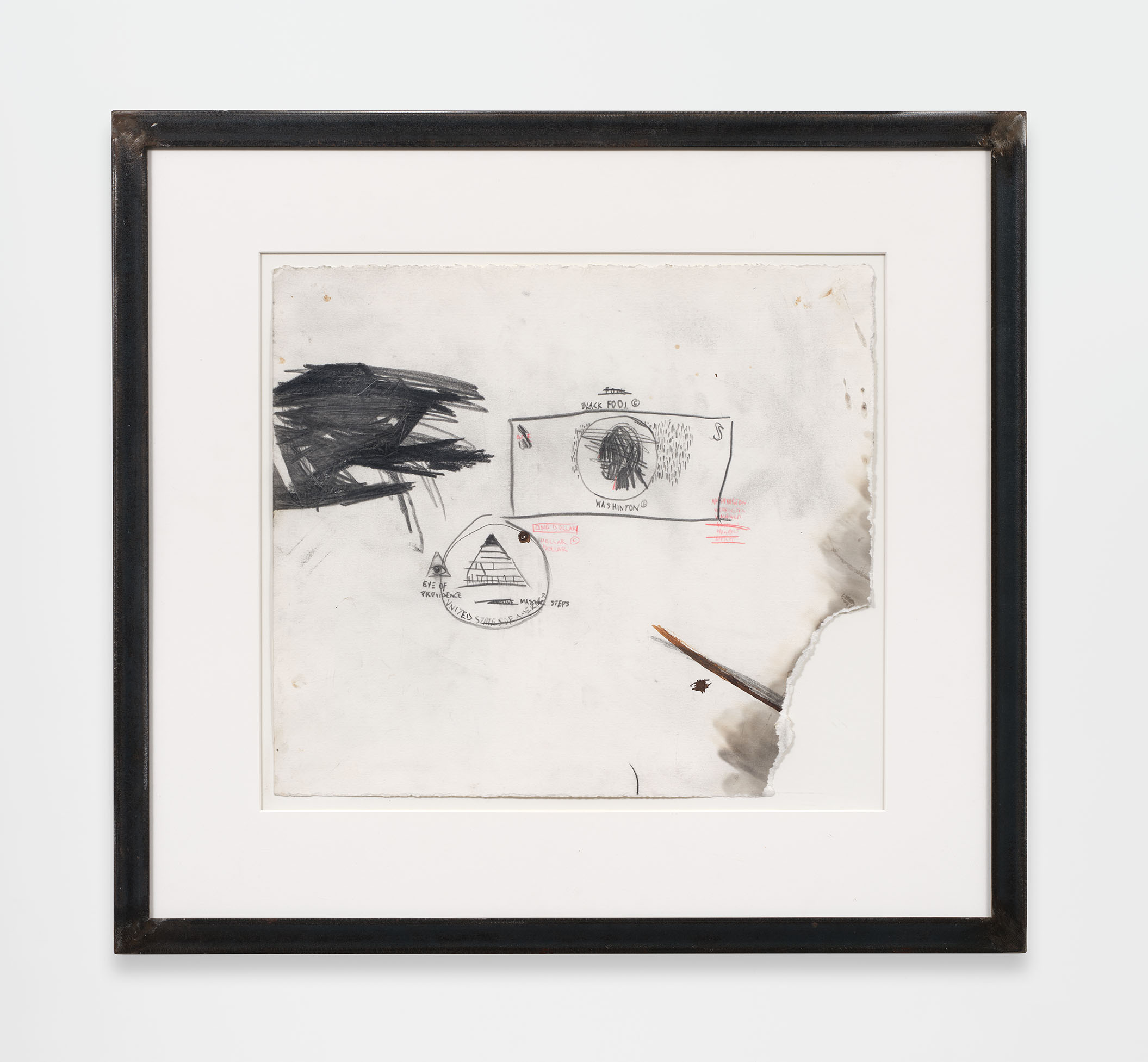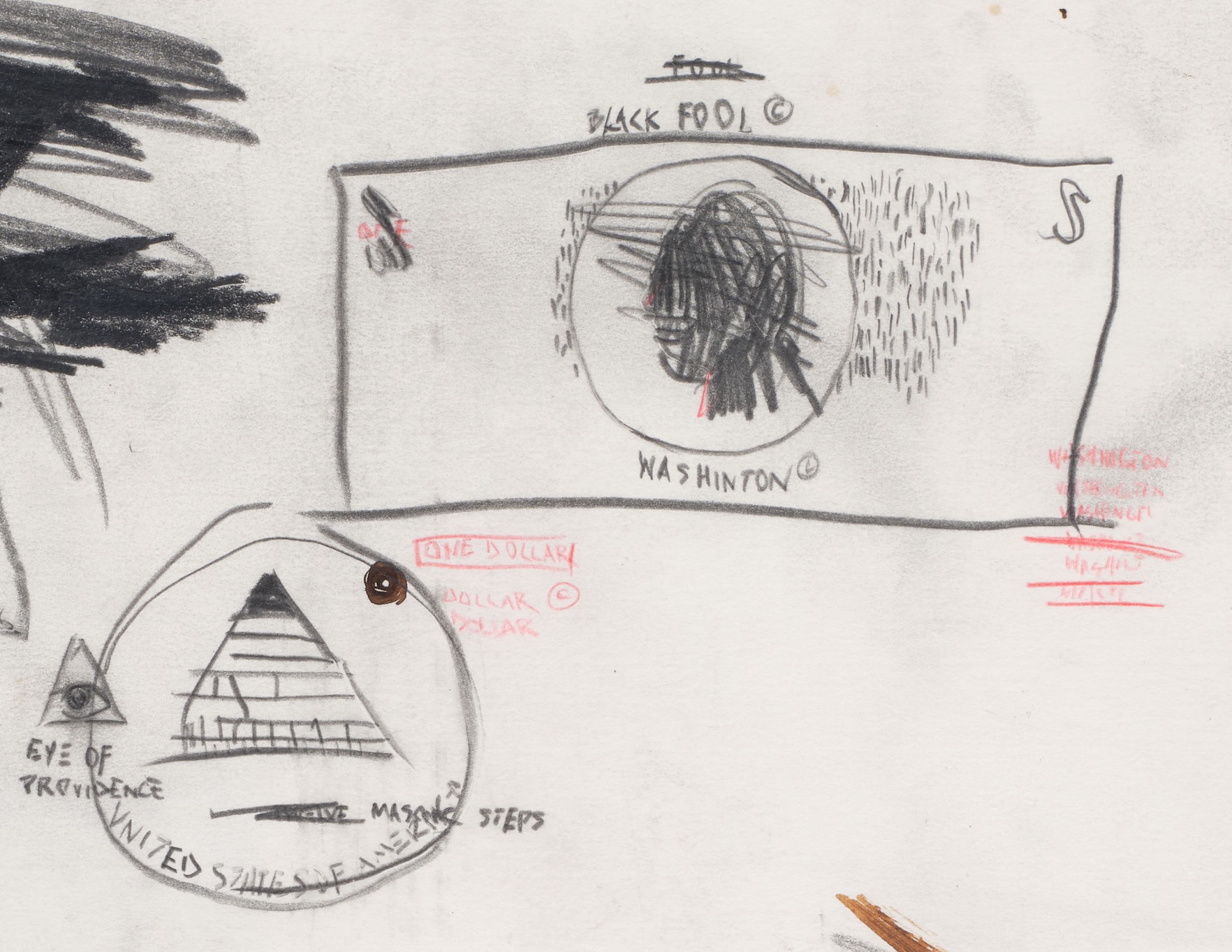Jean Michel Basquiat
Untitled (Black Fool), 1983
pencil and colored pencil on paper
14 3/4 x 16 3/4 inches
23 1/2 x 25 1/2 inches framed

”This small work on paper by Jean-Michel Basquiat is a potent microcosm of the artist’s broader visual language, incorporating themes of racial identity, power, and cultural critique through his signature mix of text and imagery. At the center of the composition is a hand-drawn rendering of a U.S. dollar bill, marked with the phrase “BLACK FOOL” above a silhouetted head where a presidential portrait would traditionally appear. This alteration is both subversive and deeply personal—Basquiat confronts the entanglement of race and economic value, mocking the reverence of currency while commenting on the exploitation and misrepresentation of Black identity in American systems.
The phrase “BLACK FOOL” functions as a searing indictment—possibly self-reflective, but more likely aimed at a society that reduces individuals to caricatures or symbols. This textual intervention replaces national authority with a pointed accusation, highlighting how Black bodies and cultural production are commodified yet devalued.

”Below this, a stamped image of the pyramid from the Great Seal of the United States reinforces Basquiat’s preoccupation with power structures and their mythologies. He often recontextualized American iconography to expose the violence and inequality embedded within historical narratives. The use of stamped or printed motifs alongside expressive, almost violent gestures—like the thick black scribble and the gash of missing paper at the lower right—reflects his method of layering systems of control with raw, emotional disruption.
The torn edge and visibly stained, weathered paper surface intensify the sense of urgency and fragility. This isn’t a precious object—it’s a battle-scarred artifact. In Basquiat’s visual vocabulary, destruction is part of revelation, and rupture becomes a way to critique sanitized or official versions of history.
In its scale and sparseness, this work evokes not a scream, but a whisper that stings—a quiet yet devastating commentary on how identity, value, and narrative are constructed and manipulated. Within the artist’s larger body of work, it stands as a concise but powerful statement, bearing all the hallmarks of Basquiat’s brilliance: poetic rage, cultural excavation, and the refusal to be silenced.

